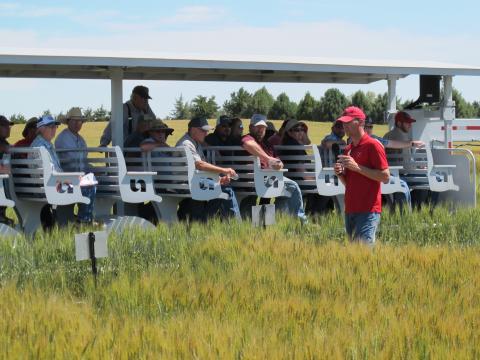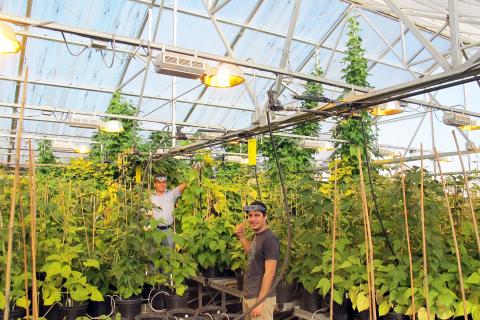Dryland Crops Research Tour June 21 at the High Plains Ag Lab
June 11, 2018
The High Plains Ag Lab Field Day, scheduled for Thursday, June 21, will highlight UNL research on dryland crops, especially field pea and winter wheat, as well as grazing and forages. View field trials and hear reports from researchers.
North Platte River Water System Update
April 13, 2018
North Platte River water operations and deliveries are expected to be normal for 2018, with no allocations expected, and an expected demand of 1.1 million acre-feet.
Herbicide-Resistant Kochia, Palmer, and Waterhemp in the Panhandle: Distribution and Management
January 8, 2018
Several field trials were undertaken in 2017 to look at options for controlling herbicide-resistant kochia, Palmer amaranth, and waterhemp in dry bean, corn, and sugarbeet. In addition over 80 kochia, Palmer amaranth, and waterhemp plants were collected for testing of herbicide resistance. Of these 50% of kochia and 13% of Palmer amaranth plants tested were resistant to field rates of glyphosate. While options are limited in the Panhandle, pairing crop rotations with herbicide programs using PRE and layby treatments provided effective control of key weed species. An article from the Proceedings of the 2018 Nebraska Extension Crop Production Clinics.
Dry Edible Bean Breeding Greenhouse — It’s A Jungle In There
April 6, 2018
About 800 dry bean varieties, planted in December in individual pots, are growing like crazy – far above the typical height in Panhandle bean fields. Part of a university study of how various foods affect the human gut microbiome, these beans represent the first large-scale genetic analysis of these traits in dry beans.
Women in Agriculture Conference April 13 at Sidney
March 19, 2018
“Keep Life Simple” is the theme of a Women in Agriculture Conference, which will feature information and advice about simplicity and excellence, using weather monitoring tools in agriculture, making meals with a multi-cooker, forage production, youth loans, farming with disabilities, and more.
Sulphur Cinquefoil — An Invasive Species in Nebraska
March 16, 2018
Sulphur cinquefoil is a perennial forb and aggressive invasive species that establishes quickly in disturbed areas and over-grazed sites. Prevention and, if necessary, timely identification and management are the best routes to containing this invader.
Economic Model for Dryland Crop Rotations in Western Nebraska
March 13, 2018
Economic Model for Dryland Crop Rotations in Western Nebraska (Downloadable Excel® file)
Tax Reform Workshop March 14 at Scottsbluff
March 7, 2018
Western Nebraska farmers and ranchers are invited to a tax reform workshop March 14 to learn about the impacts of the 2017 Tax Cuts and Jobs Act on their 2018 tax liability.




